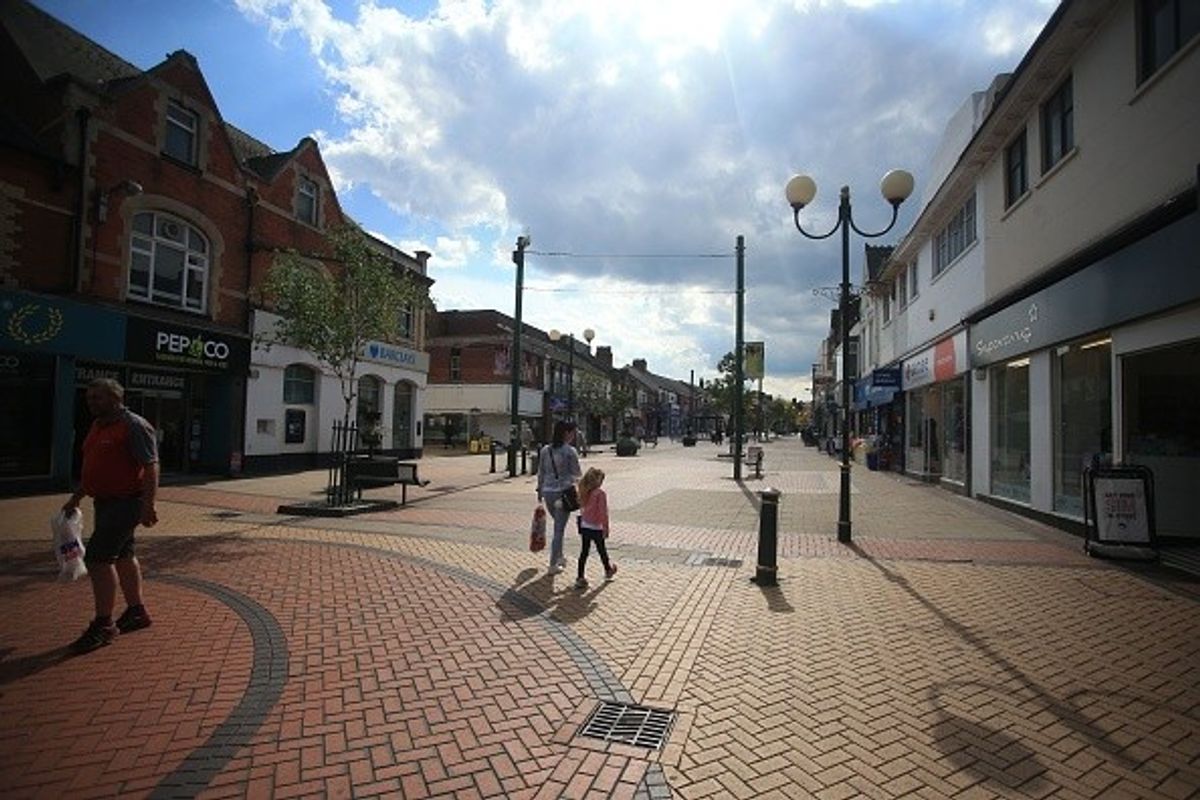The government and cities must rethink the role of high streets, a new report has urged, as it revealed deep economic divides driving up shop vacancy rates in some city centres while others thrive.
Think tank Centre for Cities is calling on the government to allocate £5 billion of its recently announced £113 billion infrastructure investment to revitalise struggling city centres.
The recommendations come in its new report, Checking out: The varying performance of high streets across the country, which uses anonymised card transaction data and retail vacancy estimates across 62 UK cities and towns to explain the growing gap in high street fortunes.
Among the top findings: city-centre shop vacancy rates are more than twice as high in Newport (19%) and Bradford (18%) as they are in Cambridge (8.5%) and London (7.4%). Cities like Wigan, Birkenhead and Blackpool are also among the worst affected, with one in seven retail units empty.
The report identifies three key causes behind high vacancy rates:
- Low local spending power: In Hull and Reading, where the local shopping catchment is the same, vacancy rates differ sharply – 4 percentage points lower in Reading, where incomes are 26 per cent higher.
- Too much retail space: Struggling cities such as Newport, Wigan and Middlesbrough have more than twice the retail floorspace per person as better-performing areas like Brighton or Liverpool.
- Spending leakage to nearby larger cities: Birkenhead, for example, loses 7.5 per cent of potential high street spend to Liverpool, while Newport and Bradford see similar losses to Cardiff and Leeds respectively.
To reverse these trends, Checking Out recommends a shift away from attempts to simply ‘save the high street’ with cosmetic measures. Instead, the Centre for Cities calls for:
- Strategic investment: A £5bn national fund to repurpose excess retail space for offices, housing, and improved public spaces.
- Business rates reform: While the system is flawed, the report argues rates are not the root cause of decline – many struggling centres already see properties paying no rates at all.
- Inner-city housing growth: Cities should prioritise building homes near city centres rather than continuing outward expansion, to increase footfall and local spend.
- Resident-first visitor strategies: Reviving high streets begins with making them liveable and attractive for locals; tourism will follow.
The research also shows that cities with healthier high streets have pivoted away from traditional retail toward food and leisure. In York and Edinburgh, one in every four pounds spent goes on food and drink; in less affluent cities like Bradford and Wigan, it’s just one in ten.
“Our research shows the high street isn’t failing everywhere. Where it is, the cause is not just cosmetic, it is economic. Policies relating to shopfronts, rents or parking miss the bigger picture,” Andrew Carter, Chief Executive of Centre for Cities, said.
“City centres that struggle are over-supplied with shops and under-supplied with people. If local residents don’t have money to spend or a reason to be in the centre, high streets suffer – no matter what interventions are made.
“It is possible to revive the fortunes of struggling high streets. But it will require local and national governments to start by fixing the economy, and not just focussing on the high street itself.”
Cities with the highest and lowest retail vacancy rates, 2025:
Top Ten
| Rank | City | Estimated city centre high street vacancy rate, 2025 (%) | Shops per 1,000 people in the catchment, 2025 |
| 1 | Newport | 19.0 | 2.9 |
| 2 | Bradford | 18.0 | 1.7 |
| 3 | Blackpool | 17.6 | 2.4 |
| 4 | Basildon | 17.4 | 2.3 |
| 5 | Sunderland | 16.8 | 2.4 |
| 6 | Birkenhead | 16.3 | 2.2 |
| 7 | Stoke | 16.3 | 2.2 |
| 8 | Wigan | 16.3 | 2.5 |
| 9 | Swansea | 15.4 | 2.1 |
| 10 | Southend | 15.4 | 2.2 |
Bottom Ten
| Rank | City | Estimated city centre high street vacancy rate, 2025 (%) | Shops per 1,000 people in the catchment, 2025 |
| 53 | Peterborough | 10.3 | 1.3 |
| 54 | Milton Keynes | 10.2 | 1.2 |
| 55 | Southampton | 10 | 1.7 |
| 56 | Liverpool | 9.5 | 1.1 |
| 57 | Edinburgh | 9.3 | * |
| 58 | Brighton | 9.2 | 1.3 |
| 59 | York | 9.2 | 2.3 |
| 60 | Oxford | 9 | 1.7 |
| 61 | Cambridge | 8.5 | 1.6 |
| 62 | London | 7.4 | 0.8 |
Source: Individual local authority business rates data; Centre for Cities calculations from Local Data Company data. *Data for Scottish cities unavailable.


